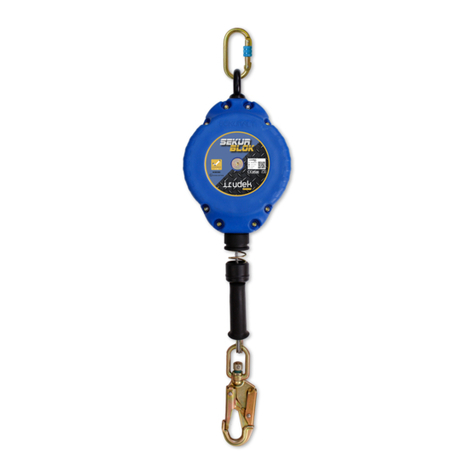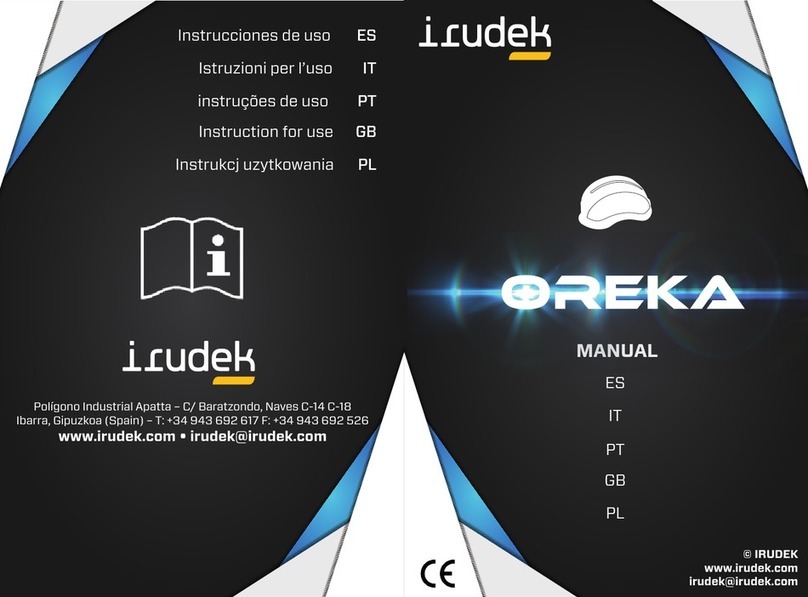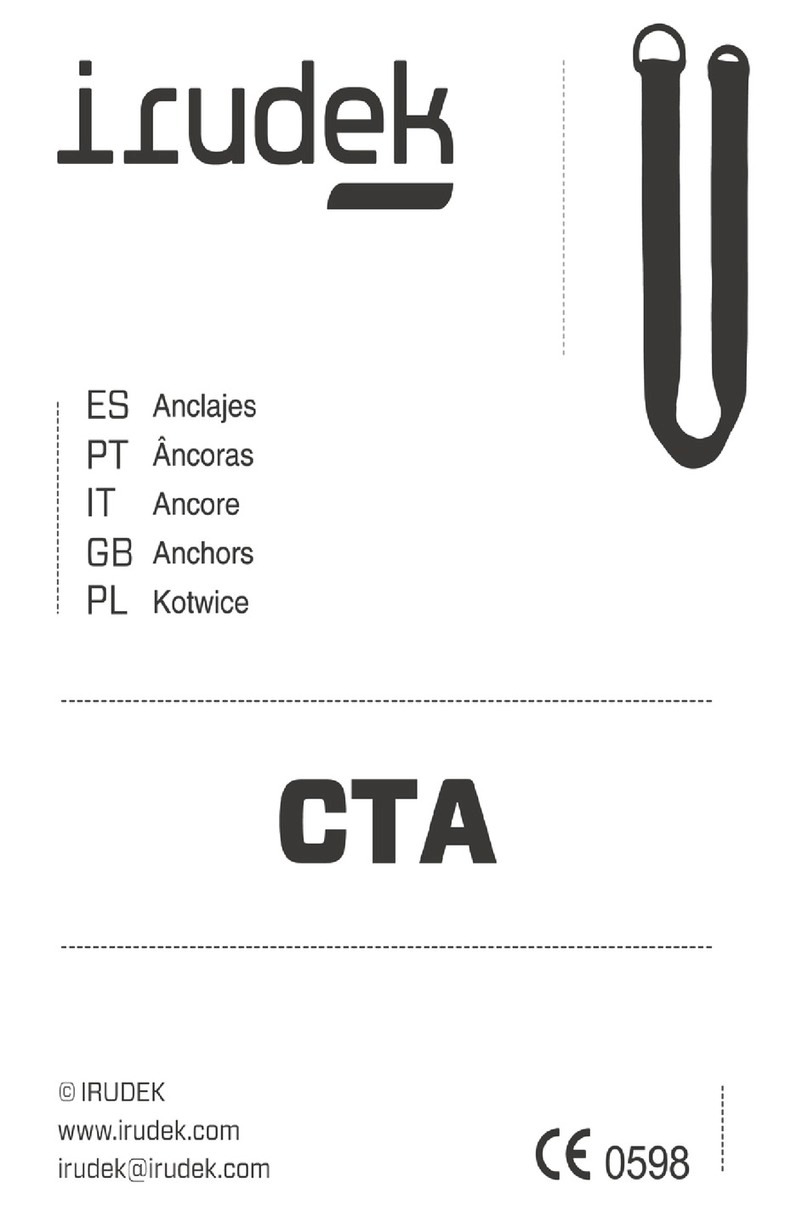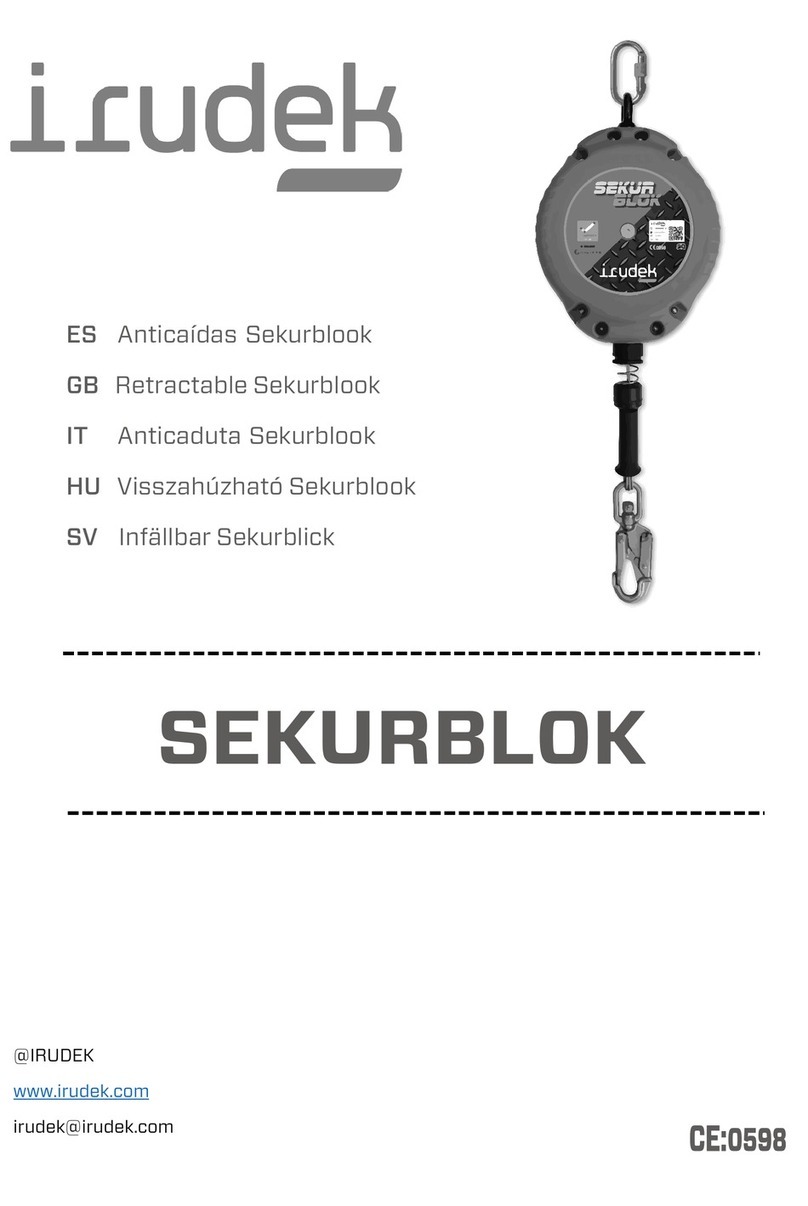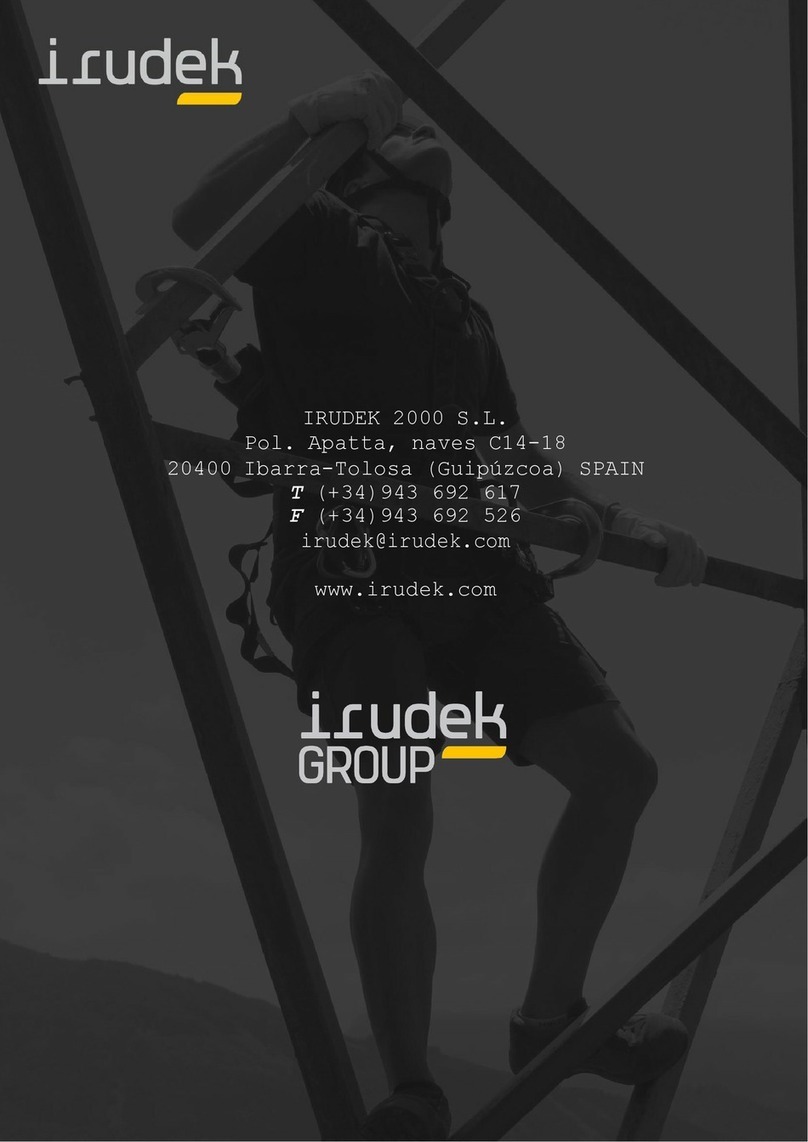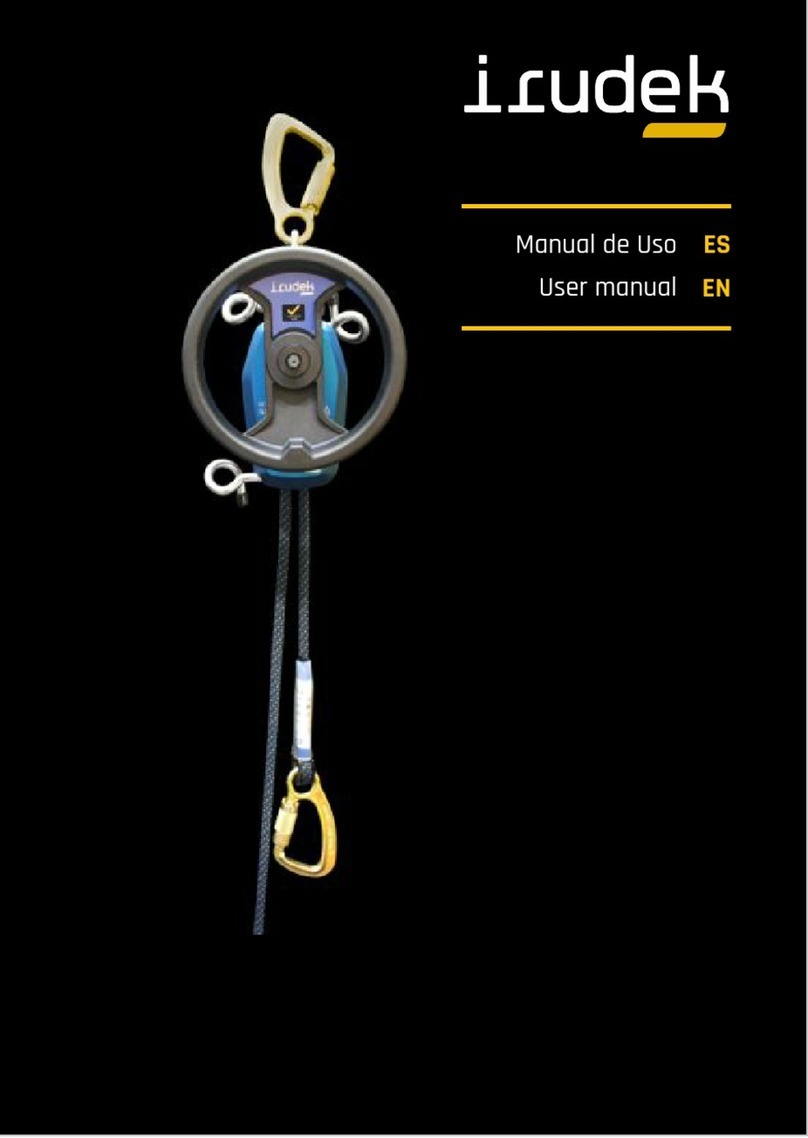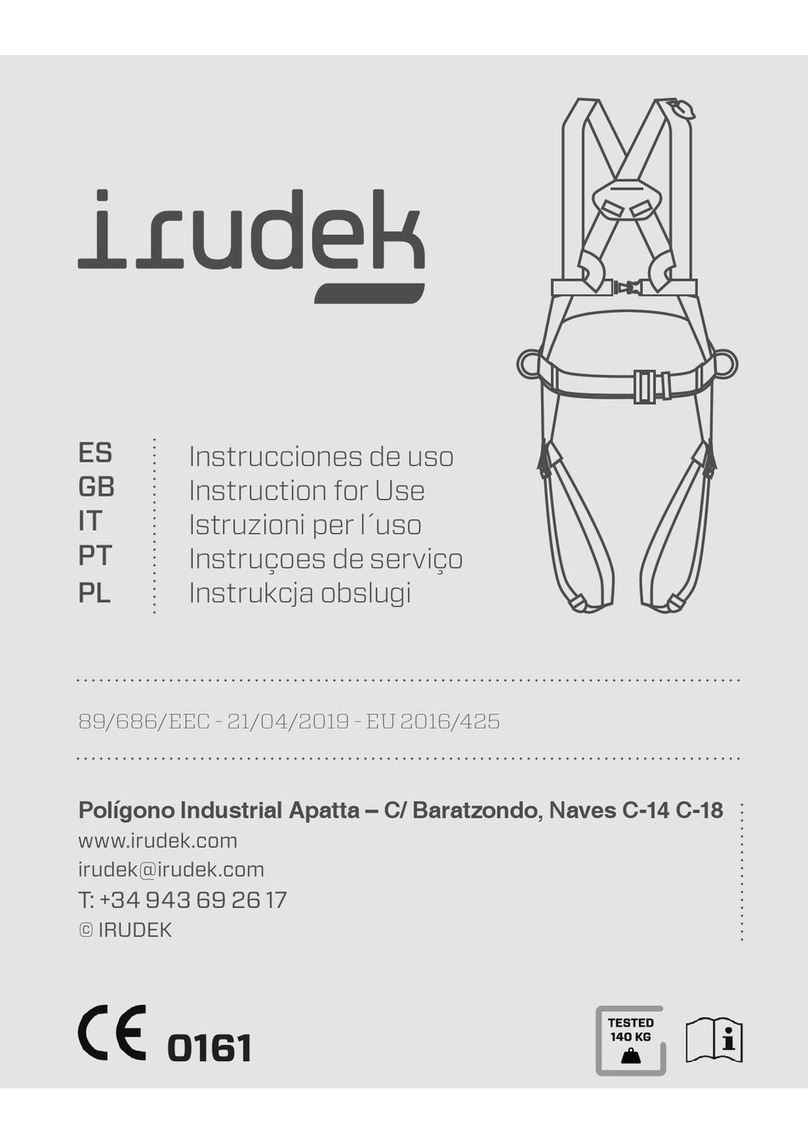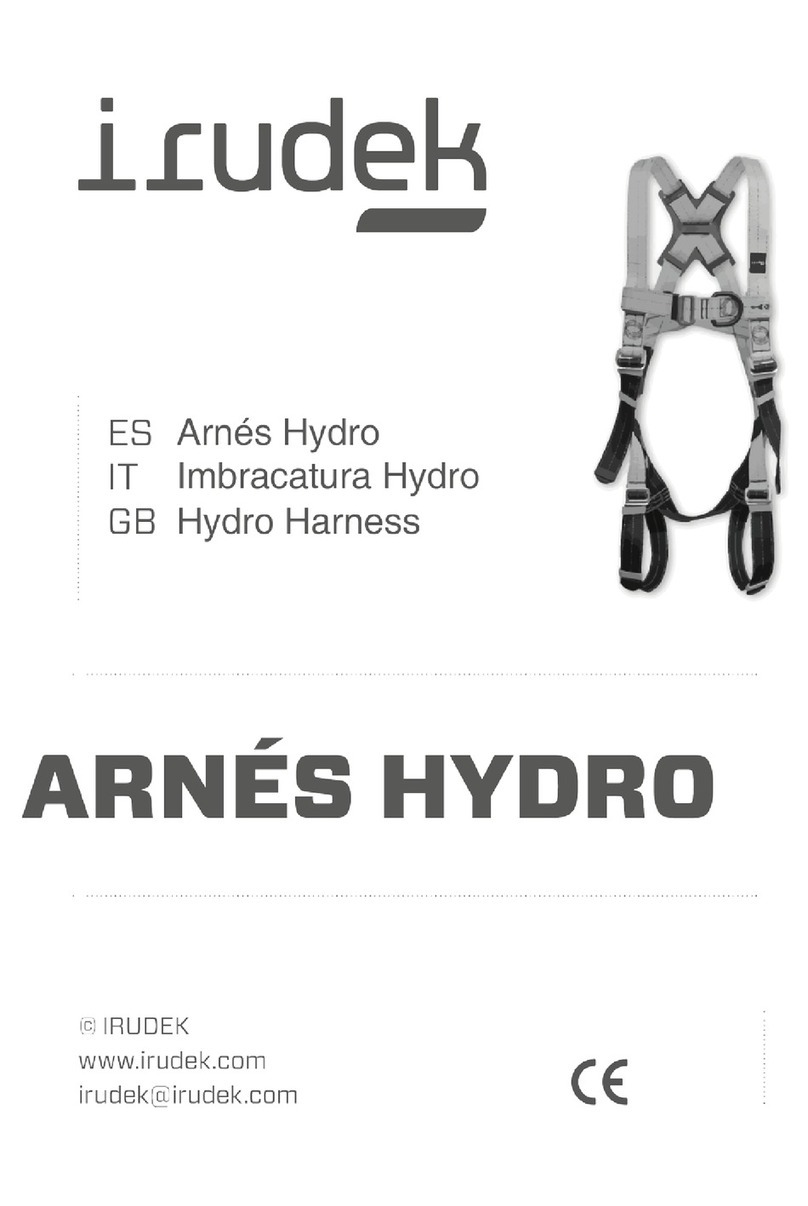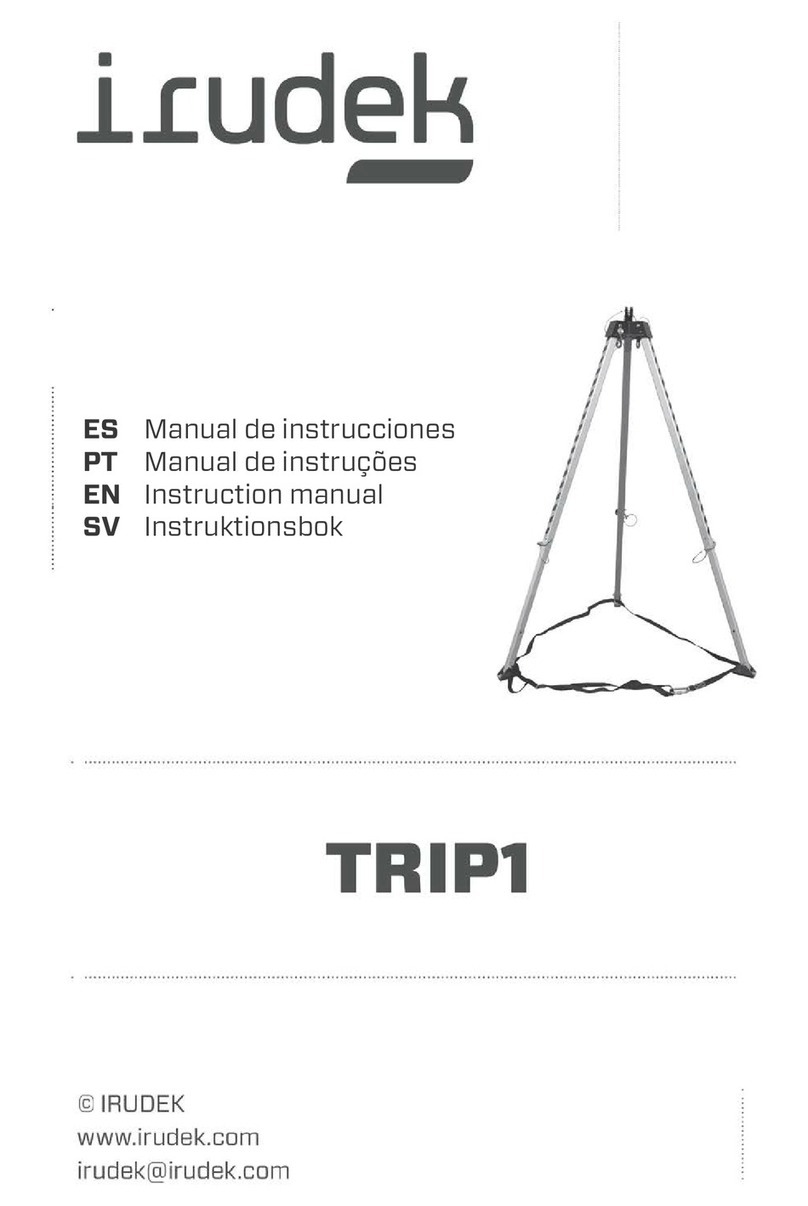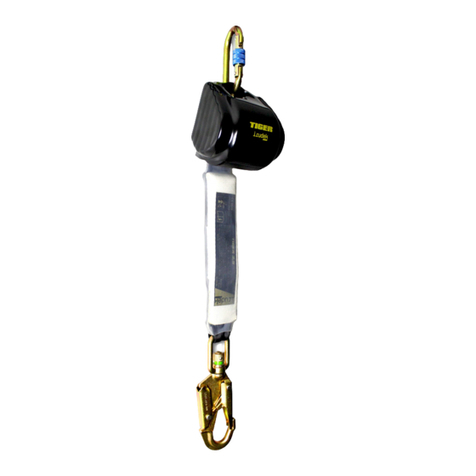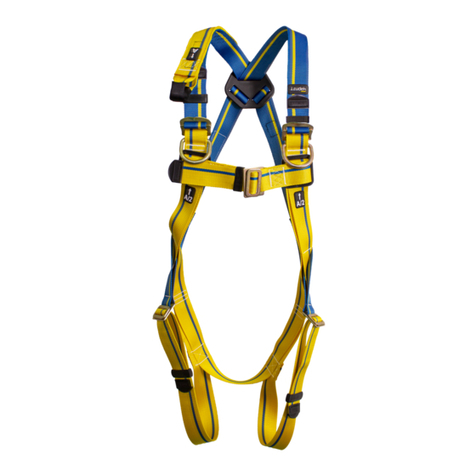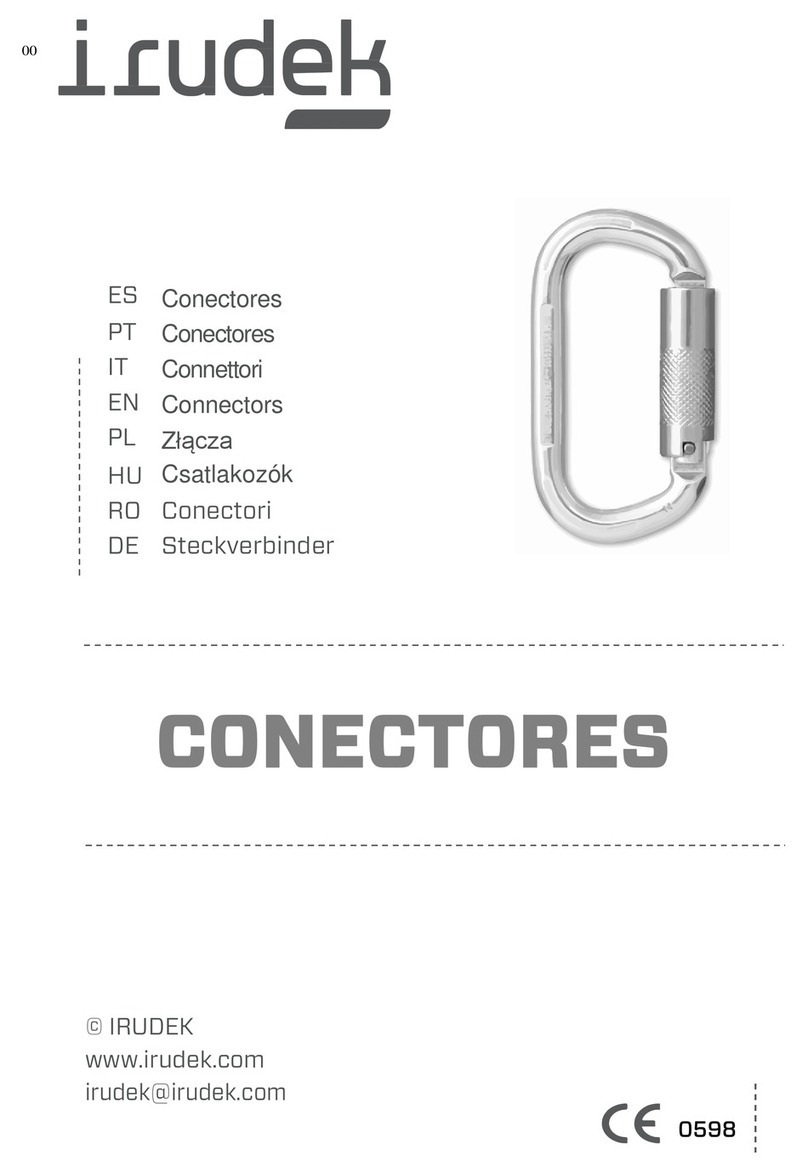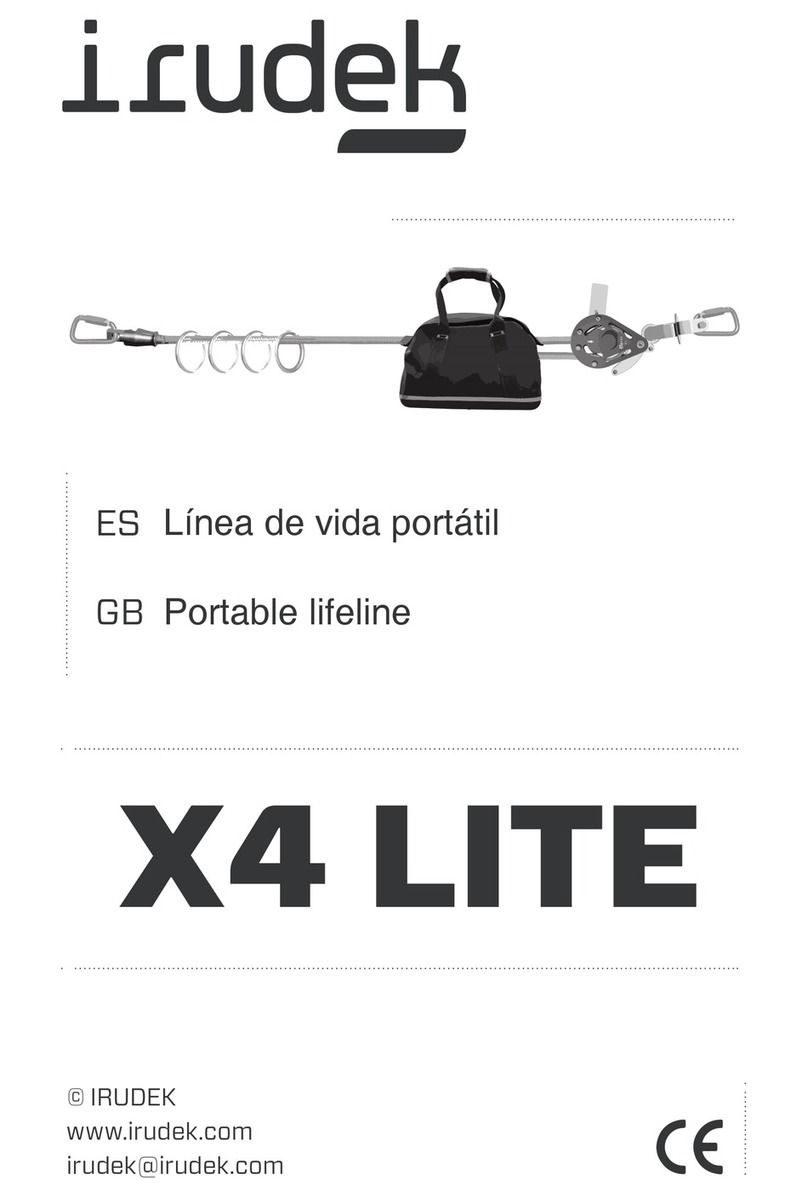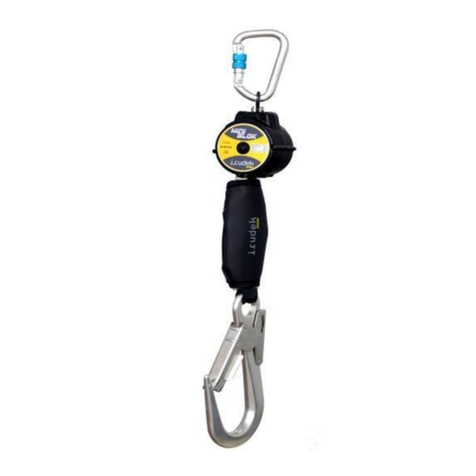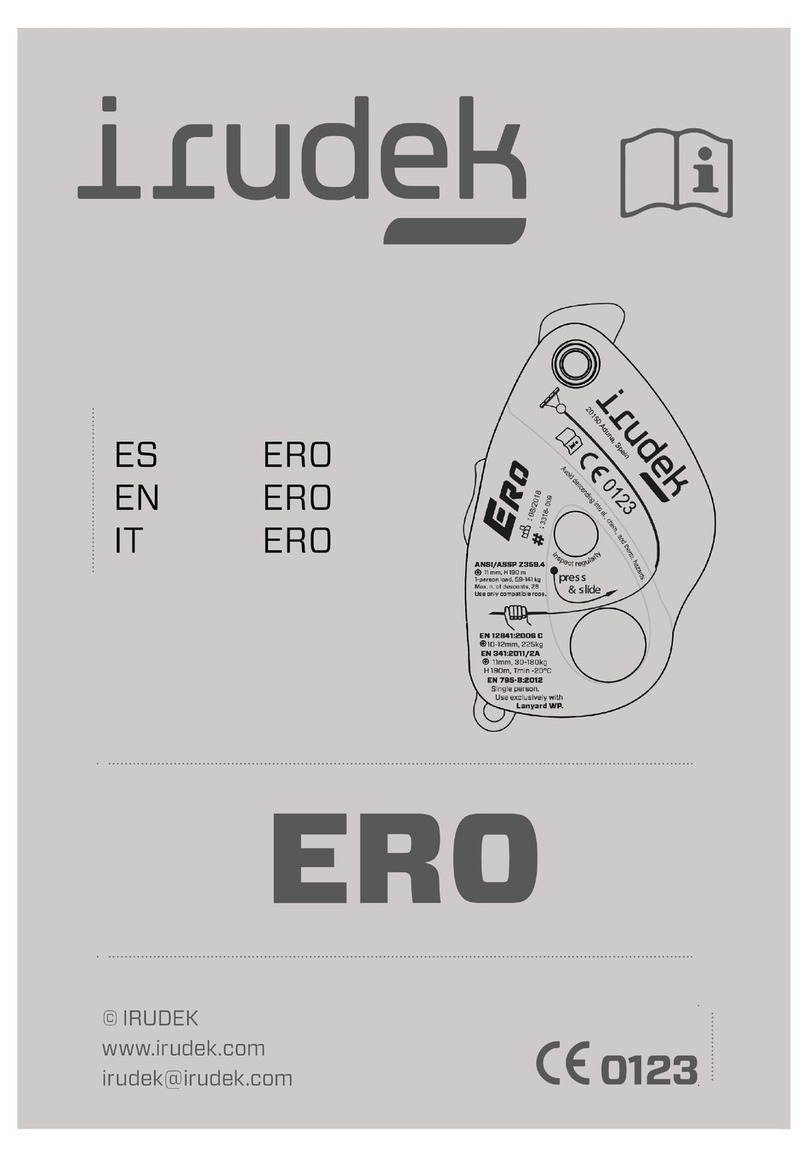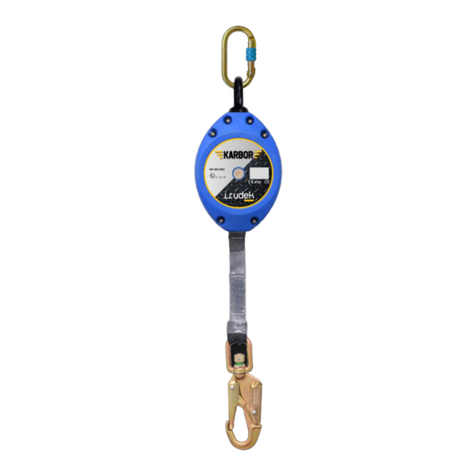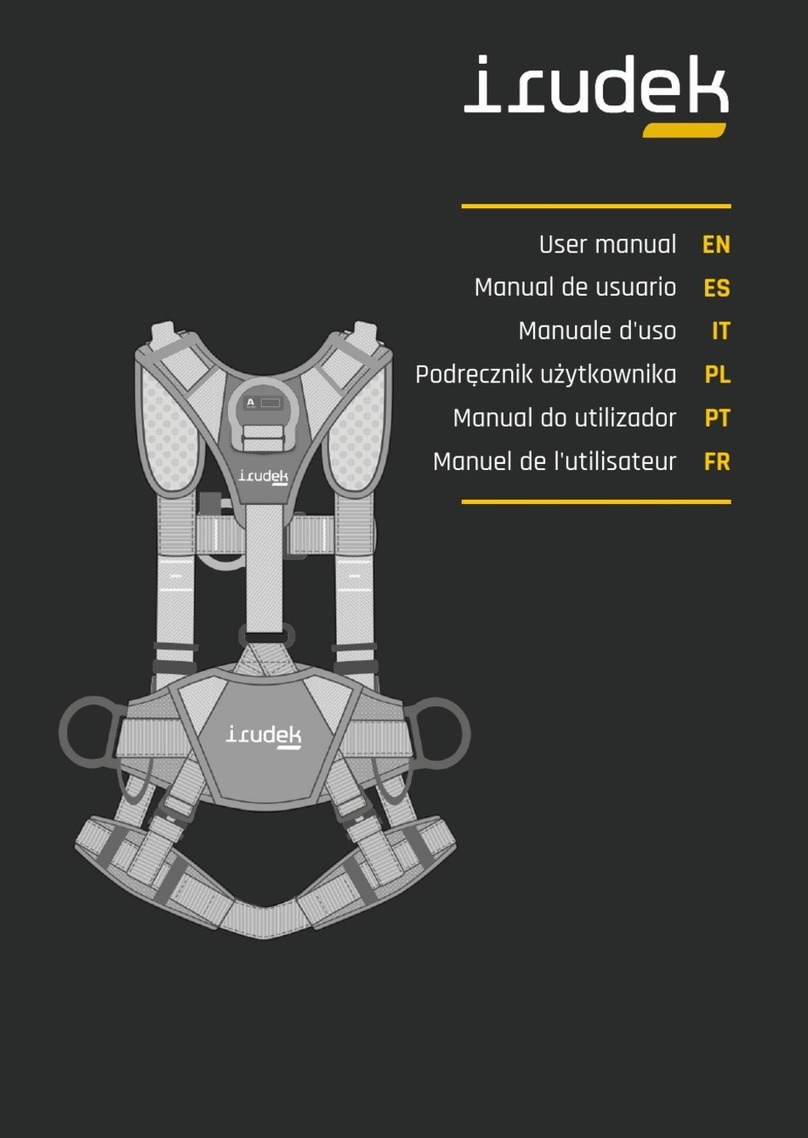
- Antes de cada uso del equipo, hay que revisarlo cuidadosamente para asegurarse de que está en
condiciones de uso y funciona correctamente.
- Durante la comprobación previa al uso es necesario revisar con cuidado todos los elementos del equipo
para verificar que no presentan rasgos de deterioro, desgaste excesivo, corrosión, abrasiones,
degradación por radiación UV, cortes e incorrecciones de uso. Prestar especial atención a la cuerda,
costuras y partes metálicas.
INFORMACIÓN Y RECOMENDACIONES
- Antes de su utilización, establecer un plan de rescate para poder ejecutarlo en caso de emergencia.
- No realizar alteraciones o adiciones al equipo sin el previo consentimiento por escrito del fabricante.
- El equipo no debe ser utilizado fuera de sus limitaciones, o para otro propósito distinto del previsto.
-Asegurar la compatibilidad de los elementos de un equipo cuando se monten en un sistema.Asegurarse
de que todos los artículos son compatibles entre sí y apropiados para la aplicación propuesta. Está
prohibido usar el sistema de protección en el que el funcionamiento de un elemento individual se vea
afectada por o interfiera con la función de otro. Revisar periódicamente las conexiones y el ajuste de los
componentes para evitar su desconexión o aflojamiento accidental.
- En caso de detectar deterioros o cualquier duda sobre su estado para una utilización segura, el equipo
debe ser retirado del uso inmediatamente. No debe ser usado otra vez hasta que una persona competente
confirme por escrito si es aceptable hacerlo.
- En caso de que haya parado una caída, el equipo debe ser retirado del uso.
- Antes de cada uso, es esencial para la seguridad verificar que el espacio libre mínimo por debajo de
los pies del usuario en el lugar de trabajo, para que en caso de caída no haya colisión con el suelo u otro
obstáculo en la trayectoria de la caída. Verificar también los detalles de espacio libre mínimo exigido
en las instrucciones de uso de los componentes respectivos del sistema anticaídas.
- Durante el uso del equipo es necesario prestar especial atención a las circunstancias peligrosas que
pueden afectar al comportamiento del equipo y a la seguridad del usuario, y en particular:
•arrastre o enlazado accidental sobre bordes cortantes;
•distintos deterioros, como cortes, abrasión, corrosión;
•influencia negativa de agentes climáticos;
•caídas de tipo “péndulo”;
•influencia de temperaturas extremas;
•efectos de contacto con productos químicos;
•conductividad eléctrica;
- Si el producto es revendido fuera del país original de destino el revendedor debe proporcionar
instrucciones de uso, mantenimiento, revisión periódica y de reparación en el idioma del país donde se
vaya a utilizar el equipo.
VIDA ÚTIL
La vida útil estimada del equipo es de 11 años a partir de la fecha de fabricación (1 año de
almacenamiento y 10 años de utilización). Los siguientes factores pueden reducir la vida útil del
producto : uso intensivo, contacto con sustancias químicas, ambientes especialmente agresivos,
exposición a temperaturas extremas, exposición a los rayos ultravioleta, abrasión, cortes, fuertes
impactos, o una mala utilización y mantenimiento.
La revisión anual obligatoria validará el funcionamiento correcto del equipo. Es obligatorio que el
equipo sea examinado por el fabricante o por una persona autorizada al menos una vez al año.
En caso de que haya parado una caída, el equipo debe ser retirado del uso.
TRANSPORTE
El equipo debe ser transportado en un embalaje que lo proteja contra la humedad o daños mecánicos,
químicos y térmicos.
